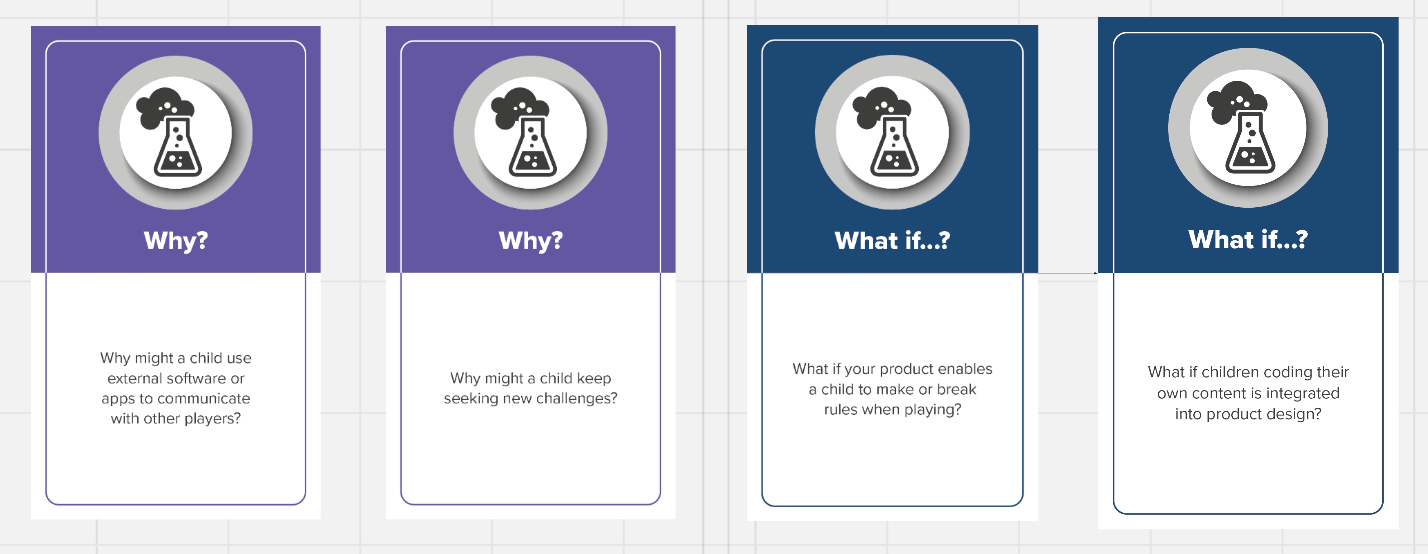New Study: Playful by Design
A framework for children's rights PLUS guidelines for formation leaders

Obviously, I'm still figuring out how to "program" a 2–3x weekly media-forward formation newsletter. But I think part of my value proposition as a writer / editor / thinker / teacher in this space is a balance of following trends in practice and following findings in research.
Moreover, a LOT of what I value about several tech and parenting newsletters that I subscribe to is the occasional unpacking of research and reports that are outside of my field.
So I'm going to assume y'all might appreciate hearing about new publications that have practical takeaways. (Drop me a comment or email if I'm wrong about that.) I've got two coming at you this week.
First up is "Playful by Design: Embedding Children’s Rights into the Digital World" by Angela Colvert, Kruakae Pothong, and Sonia Livingstone, accepted for publication in Games: Research and Practice. Livingstone is a UK-based media researcher and a bit of a legend. The article got on my radar through my Google Scholar alert for her.
The Playful by Design project is all about the benefits of (and barriers to) free play in online and offline environments, and how to better tap into the benefits and mitigate the barriers in the design of digital play environments.
This article probably caught my eye because it shares an underlying logic with a lot of the work that my colleagues and I did on the Digital Literacies for Ministry project. The authors are simultaneously (1) making a case for a framework derived from extensive interviews—in this case: 63 children (as young as 3!), 33 parents, and 30 professionals about "playful experiences with and without digital technologies" and (2) sharing that framework and associated resources with people who study and make digital games. (We did the same thing among theological faculty thinking about how to prepare seminarians for new media engagement in the course of their leadership.)
The write-up of the team's framework-setting research is gorgeous and a delight to read. I highly recommend checking it out. Here's the cover and an excerpt:

Children and young people could not be clearer. They want digital products designed to enhance the qualities of play and at the same time want those aspects of design that are exploitative or invasive to be dialled down. Neither they nor we want a completely ‘wholefood experience’, nor to turn back the clock to an offline world. As the report shows, whether or not children can identify specific features such as autoplay, automated notifications, in-app purchases or nudges to share, they feel the pressure to stay on even when they want to stop and deplore that they cannot explore freely or experiment with diverse experiences without being subject to commercial pressures or the loss of personal safety.
(Aside: I'm convinced a lot of our moral panics about all sorts of "kids these days" issues would be put in proper perspective if we more regularly and honestly asked young people for their own assessment, which is why I'm proud to be part of research traditions that take young people's gifts as knowledge-creators seriously.)
The Framework
OK, let me cut to the chase of why I think this research is important, and give you some ideas of how to engage with it.
I don't expect there are a lot of video game designers reading this newsletter. But I do know that formation leaders help design a LOT of play and playful learning experiences.
This framework gives some helpful ways of thinking about how, all while putting children's rights at the forefront. They are also, of course, a good guide for parents evaluating various kinds of digital gaming their kids might be interested in. Here are the principles (p. 3):
Be welcoming: Prioritise digital features that are inclusive, sociable and welcoming to all, reducing hateful communication and forms of exclusion, and relecting multiple identities.
Enhance imagination: Prioritise creative resources and imaginative, open-ended play over pre-determined pathways built on popularity metrics or driven by advertising or other commercial pressures.
Enable open-ended play: Provide and enhance features that ofer easy-to-use pathways, flexibility and variety, as these support children’s agency and encourage imaginative, stimulating and open-ended play.
Adopt ethical commercial exploitation: Reduce compulsive features designed to prolong user engagement or cultivate dependency on games, apps or platforms so that children’s immersive play is intrinsically motivated and freely chosen.
Ensure safety: Ensure children’s play in online spaces is safe, including giving them control over who can contact them and providing help when needed.
Allow for experimentation: Recognise that exploration, invention and a degree of risk taking are important in children’s play, and that the burden should not fall on them always to be cautious or anxious, or to follow the rules set by others.
Be age appropriate: Respect the needs of children of diferent ages by providing age-appropriate opportunities for play while also allowing for safe intergenerational play.
Nothing shocking, I realize. In some ways, I think the power is in some of the resources these and other researchers have created to aid the design process.
The Resources
You probably know I'm a sucker for cards. So my eyebrows went up when I saw that the researchers had turned their principles into a kind of card game for asking questions related to these principles when designing playful experiences.
Reader, the cards are very cool. Among other delivery methods, the authors built them out in a very thoughtful Miro board. Here's a sampling of the various types of cards:


Also rich is a set of resources in the Playful By Design whitepaper, a series of case studies (pp. 40–64) of where this kind of open-ended play if flourishing online—but also ways these platforms could improve with respect to the children's rights lens. This section is definitely worth a read if you want to learn more about free play possibilities and pitfalls on the following platforms:
- Fortnite
- Minecraft
- Wii – RingFit Adventure
- Roblox
- TikTok
- YouTube
- Zoom
Bottom Line
Whether or not you read the journal article, I definitely think spending some time with the Playful By Design framework and resources in some way is a valuable (and free!) professional development opportunity for any educator or formation leader.
If I had to pick one tool for the playbook, it would definitely be the accessible prompts in the design tool card deck. You can download them directly here. Have fun!


